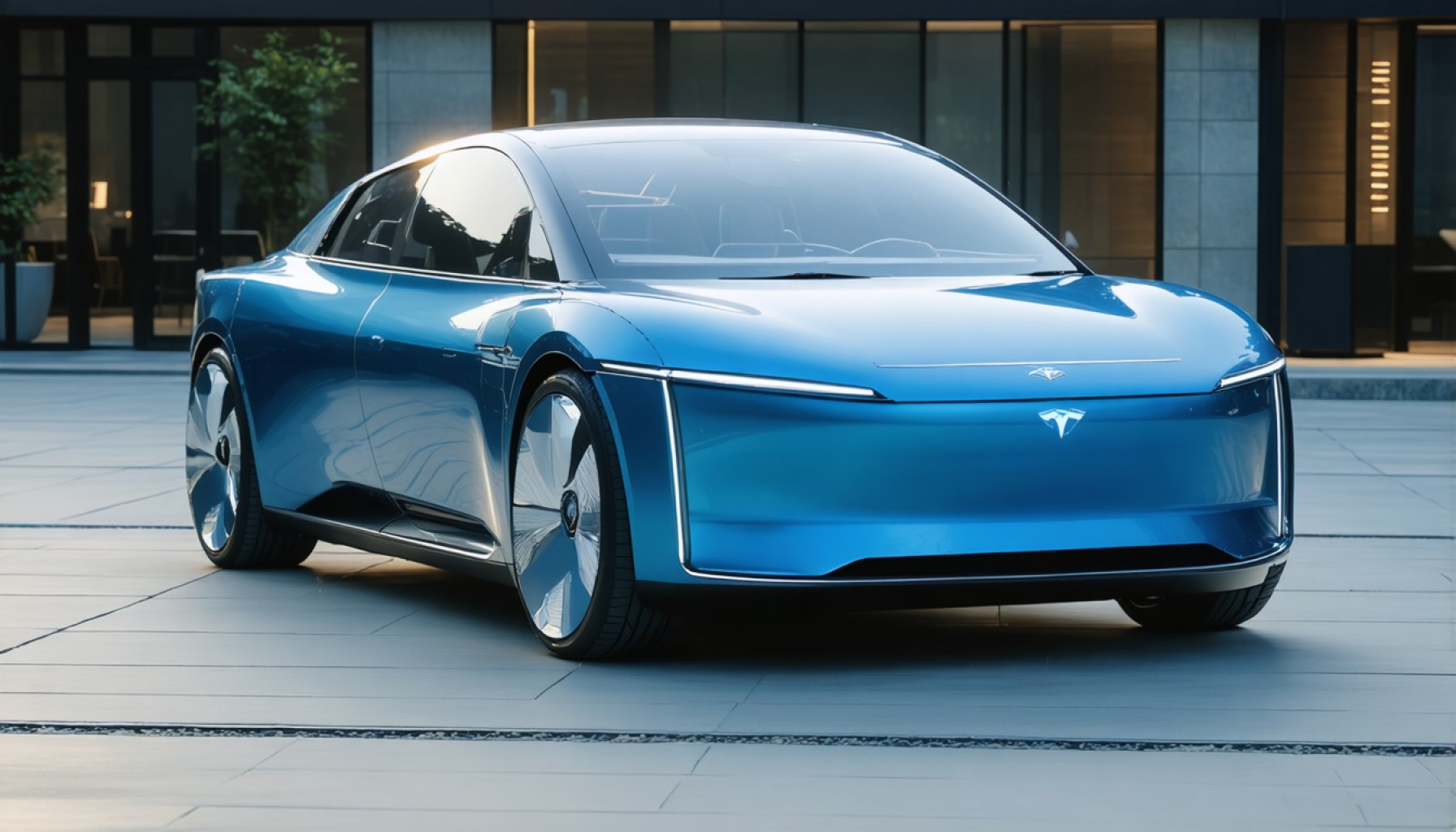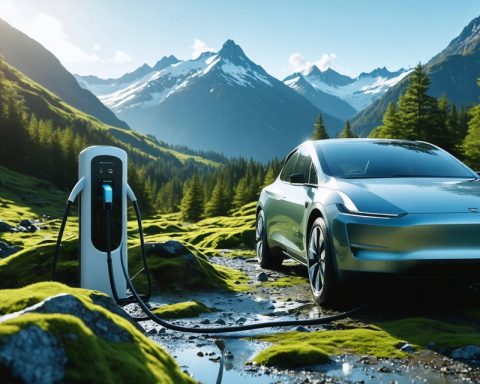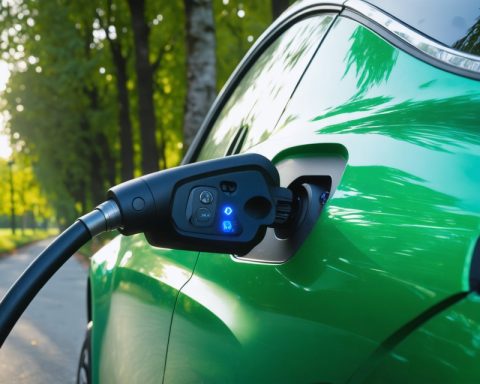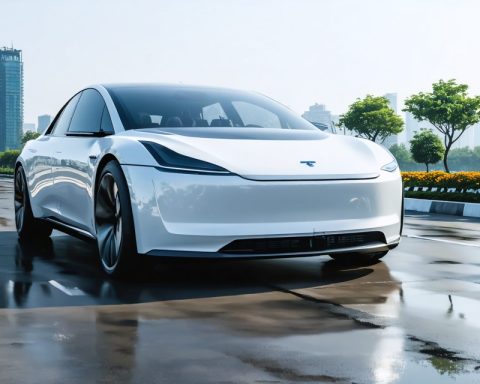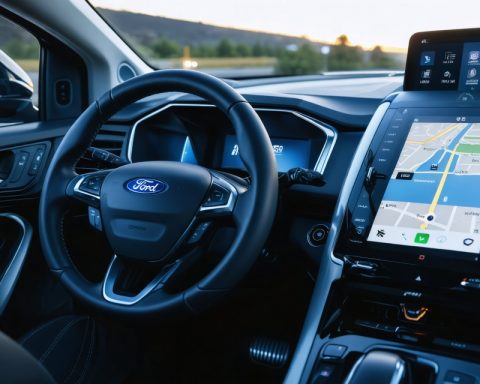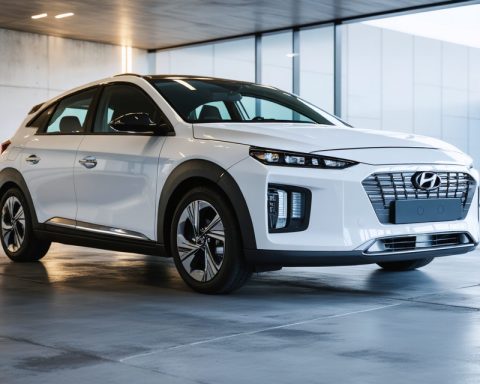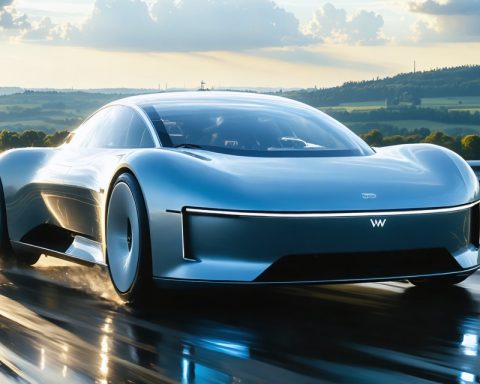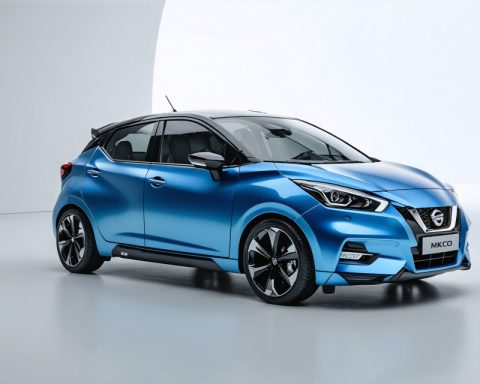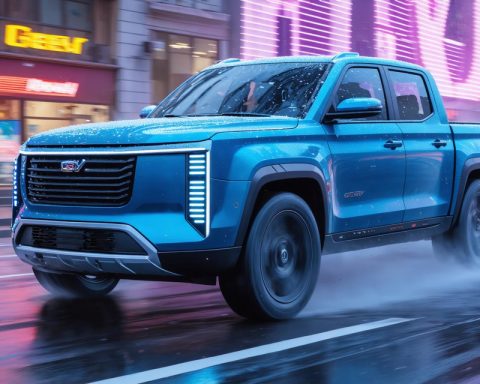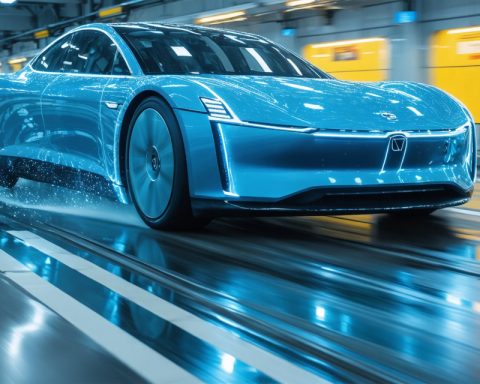- BYD leads the electric vehicle market, surpassing both local competitors and global leaders like Tesla in China.
- In 2024, BYD’s revenue reached $107 billion, outpacing Tesla’s $97.7 billion.
- BYD commands over a third of China’s EV market with rapid monthly sales growth.
- Government incentives and strategic foresight have fueled BYD’s market dominance.
- The company experienced a 73% increase in fourth-quarter net profit, reaching 15 billion yuan ($2.1 billion).
- Global expansion plans include a significant presence in Europe, with potential manufacturing in Germany.
- BYD’s stock outlook is positive, with projected 15% annual growth in earnings and 13% growth in revenue.
- BYD is at the forefront of sustainable innovation, leading in the transition to cleaner transportation solutions.
Amidst the cacophony of electric vehicle (EV) engines revving up to overtake the internal combustion giants, BYD stands proudly at the forefront. Emerging from the bustling streets of Shenzhen, this Chinese powerhouse has not only outshined its local compatriots but has also surpassed global titans like Tesla, especially within the colossal Chinese market.
A staggering testament to its prowess, BYD’s revenue skyrocketed to an impressive $107 billion in 2024, eclipsing Tesla’s $97.7 billion. This monumental leap reflects the company’s deep-rooted influence in the EV realm, fueled by an insatiable demand for both pure electric and hybrid vehicles. The figures speak volumes: BYD now claims over one-third of China’s dynamic EV landscape, setting new benchmarks with monthly sales that grow like vines reaching for the sun.
Behind this triumph lies a confluence of strategic foresight and robust market acumen. As governmental incentives breathe new life into the pursuit of cleaner transportation, BYD seizes this opportune momentum. The “old-for-new” subsidies have done more than just resuscitate China’s flagging car market; they’ve catalyzed a transformative wave that BYD expertly rides, solidifying its dominance.
Curious minds may wonder if this success translates to profitability. The answer is a resounding yes. A 73% surge in fourth-quarter net profit to a record-breaking 15 billion yuan ($2.1 billion) underscores BYD’s unmatched business acumen. These gains are woven from competitive pricing strategies and the allure of their diverse vehicle lineup, from sleek sedans to robust plug-in hybrids.
However, BYD’s story isn’t merely one of internal success. The company’s global aspirations have become more audacious by the year. With exports leaping 72% in the past year, BYD sets its sights on new horizons, particularly eyeing European expansion with potential manufacturing plants in Germany. Such strategic moves hint at a future where the company becomes not just a leader in China but a global shaper of transport.
Financially sound and future-forward, BYD’s stock outlook gleams with optimism. Expert analysts forecast a promising 15% annual growth in earnings, partnering with a 13% rise in revenue. Robust earnings per share (EPS) growth and a significant return on equity (ROE) spotlight the company’s financial health, painting a picture of a robust and strategic enterprise poised for continued ascent.
As BYD surges ahead, leaving both local and global competitors in its wake, one takeaway becomes clear: the race to electrification has a new frontrunner. It is not just about who sells the most cars or who generates the most revenue; it’s about dominating the narrative of sustainable innovation. In a world where the call for cleaner technology grows louder by the day, BYD has not just joined the chorus—it leads it, setting the tone for the future of transportation. And as the landscape shifts, all eyes are on BYD, the titan shaping tomorrow’s roads.
How BYD is Leading the Charge in the EV Revolution
BYD’s Rise in the Electric Vehicle Industry: Facts and Insights
Diverse Product Line
BYD offers a comprehensive range of vehicles, from compact city cars to luxury sedans and commercial buses. This diversification strategy not only caters to varying consumer needs but also enhances resilience against market fluctuations. A key selling point for BYD is its successful integration of innovative battery technologies, underpinning both electric and plug-in hybrid models.
Technological Advancements
BYD is renowned for its advancements in battery technology. Its self-developed Blade Battery has set new benchmarks in safety, efficiency, and lifespan, making it a preferred choice over conventional lithium-ion batteries. Unlike many competitors, BYD’s strong vertical integration—manufacturing batteries, chips, and key vehicle components in-house—gives it a distinct advantage in cost control and supply chain transparency.
Global Expansion Plans
In addition to its potential German manufacturing facilities, BYD is eyeing markets in North America, South America, and Africa. As part of its strategy, the company is entering strategic partnerships and collaborations to navigate local regulations and market dynamics efficiently.
Market Forecasts & Industry Trends
Global EV Market Dynamics
The global electric vehicle market is projected to grow at a compound annual growth rate (CAGR) of around 22% from 2022 to 2030, according to a report by BloombergNEF. Governments worldwide continue implementing stringent emissions regulations, offering subsidies for EV purchases, and expanding charging infrastructure—all favorable factors for BYD’s continued growth.
Comparison with Competitors
While Tesla remains a dominant player in the premium EV segment, BYD’s strength lies in its ability to offer high-quality vehicles at competitive prices. This affordability, paired with advanced technology, allows BYD to capture a broader market share, particularly in cost-sensitive markets.
Controversies and Limitations
Despite its impressive growth, BYD faces certain challenges, including geopolitical tensions that might affect international operations and potential backlash from local manufacturers in international markets. Moreover, the global semiconductor shortage poses risks to production timelines and costs.
Real-World Use Cases
– Public Transportation: Cities like London and Los Angeles have incorporated BYD electric buses into their public transportation systems, significantly reducing emissions.
– Fleet Services: Companies are turning to BYD’s electric vans for urban logistics, benefiting from lower operational and maintenance costs compared to traditional vehicles.
Expert Insights and Predictions
According to Morgan Stanley, BYD’s comprehensive approach to R&D and its strategic market positioning can make it a frontrunner in the global EV market by 2030. Analysts suggest that BYD’s ongoing focus on innovation and sustainability aligns well with future automotive trends.
Actionable Recommendations
– Stay Informed: Investors and industry observers should keep an eye on BYD’s quarterly financial releases and strategic announcements.
– Green Incentives: Consumers interested in purchasing EVs might look for regions with available subsidies, making BYD’s offerings even more economical.
– Business Opportunities: Companies in the logistics or transportation sectors should consider BYD’s commercial vehicles to leverage sustainability and cost-efficiency.
For more insights on the electric vehicle market, visit the main domain of BYD.
